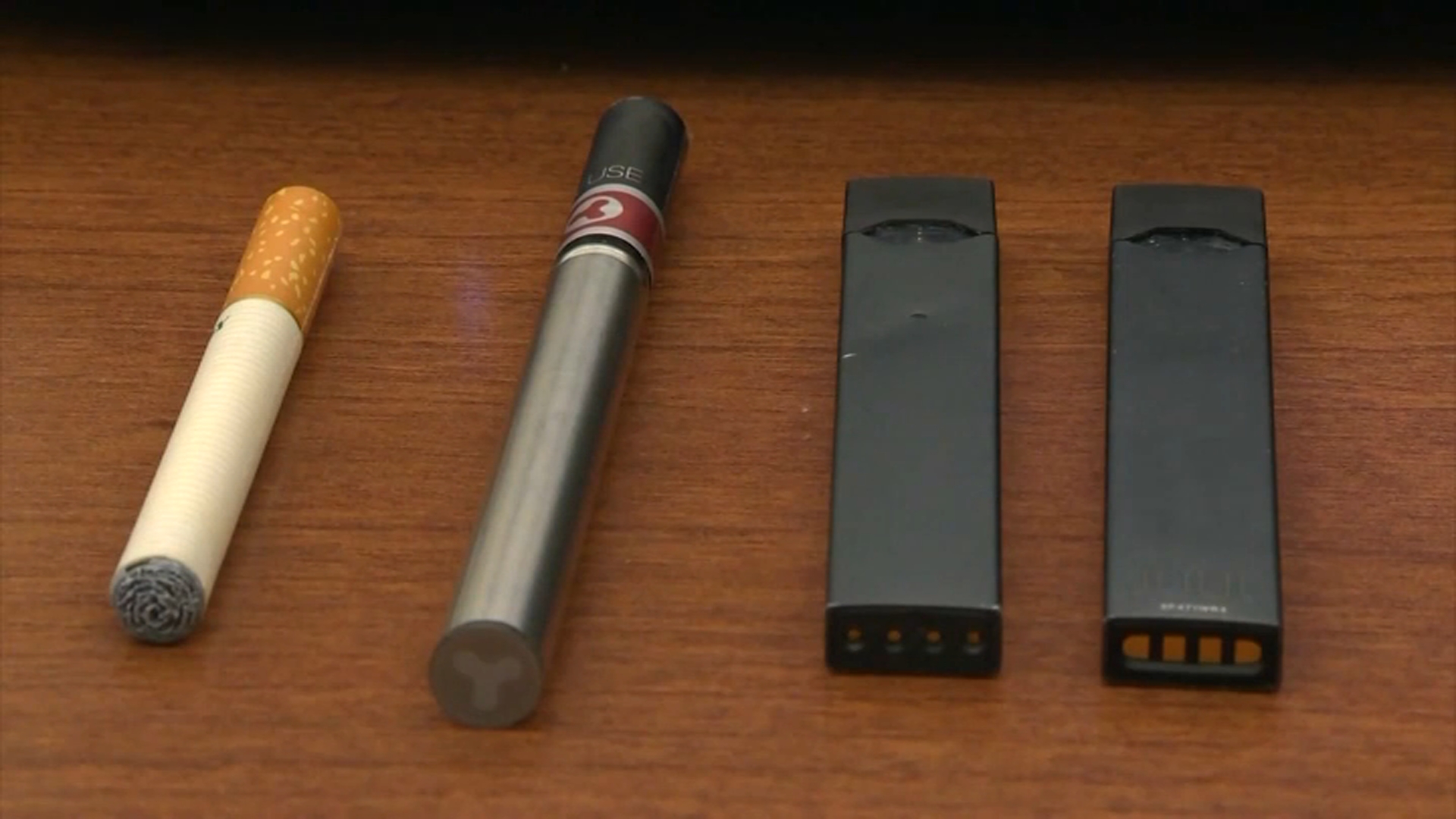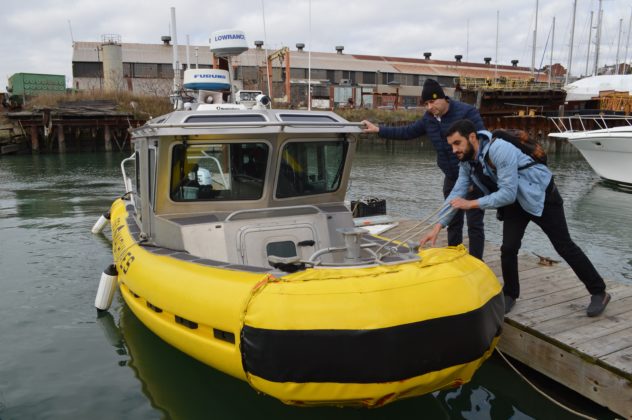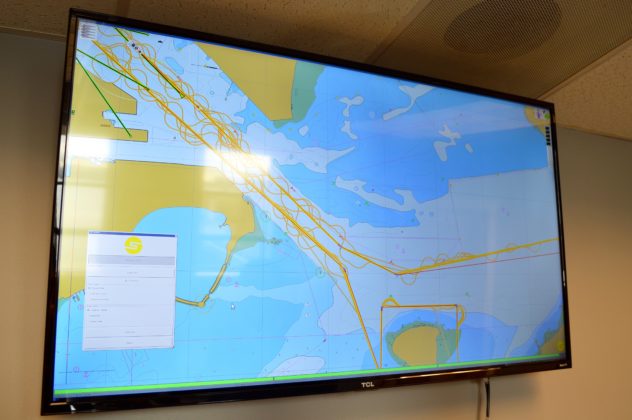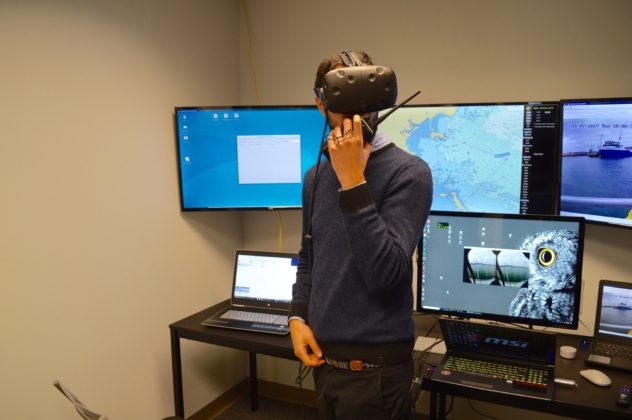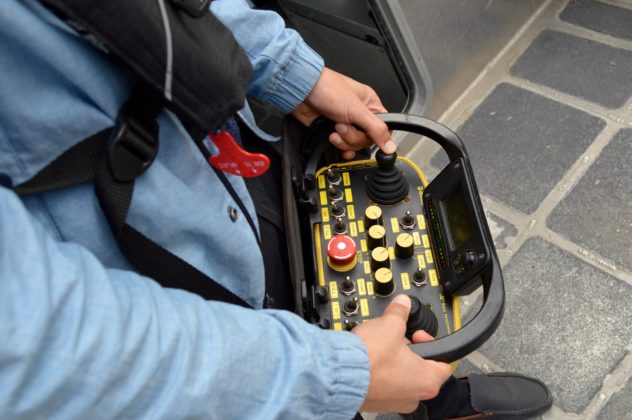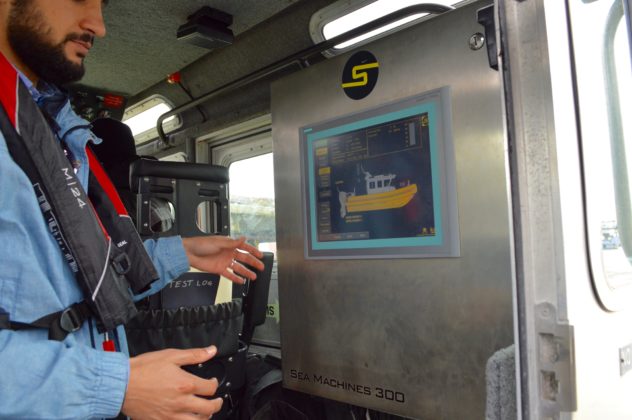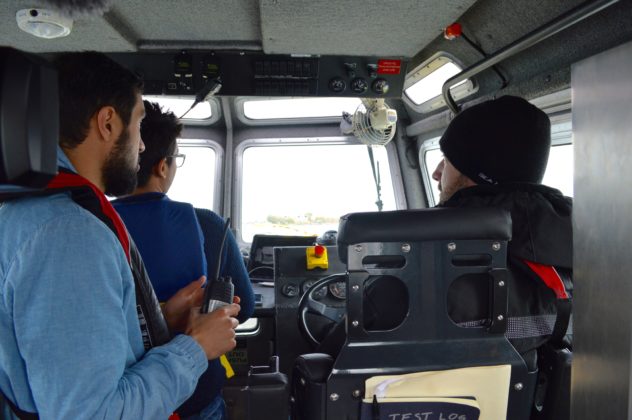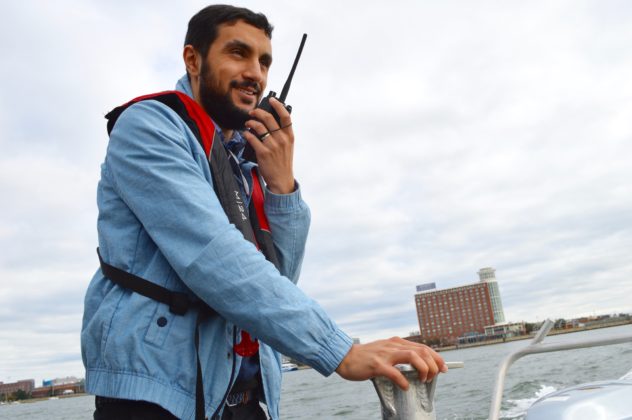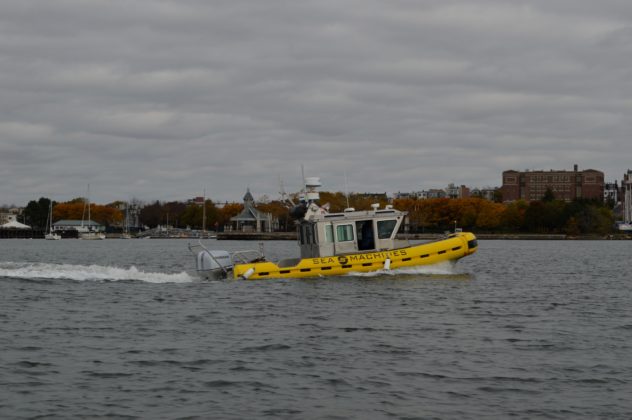This story was written in partnership with NBC Boston, which produced video for this feature.
There may be a time in the near future when you board a ship that can drive itself.
That’s something I got to experience myself in early November when I boarded a former Coast Guard boat operated by Sea Machines Robotics, an early-stage startup that is developing autonomous systems for self-driving boats in an East Boston shipyard.
Retrofitted with sensors and a “computerized brain,” the boat was driven to the middle of Boston Harbor by a Sea Machines employee. The employee then let go of the steering wheel and then, within a few minutes, the boat started navigating the waters by itself, with the ability to change course if the system detected another boat coming through.
While self-driving cars are soaking up most of the attention in the autonomous vehicle space, startups like Sea Machines have begun to convince players in the marine and maritime industry that ships and boats are long overdue for an upgrade.
Michael Johnson, CEO and founder of Sea Machines, knows that all too well. As someone who has worked in the marine and maritime industry for over 20 years, he has experienced first-hand how inefficient and, in some cases, dangerous marine vessels can be.
Local
In-depth news coverage of the Greater Boston Area.
“It’s a wide-open space with relatively slower speeds, so as opposed to cars that are going down the road at 70 miles per hour, we have a sector that is ripe for autonomy,” he said.
Johnson said he got his inkling for Sea Machines when he was working on an oil spill response team in the Arctic. But it was when Johnson worked on a salvage mission for the sunken cruise ship Costa Concordia that he realized the true benefit of autonomous vessels.
“During the course of that project, I saw how the inefficiencies of the tens and tens of vessels we had daily there that were serving us and how we could connect those vessels, in a much more efficient manner,” he said. “Secondly, every day, looking out on that wreck site and seeing that cruise ship on her side and the 30-plus passengers that were killed, I realized we have the technology today to do better.”
#td_uid_2_5a497dc61d83e .td-doubleSlider-2 .td-item1 { background: url(https://www.americaninno.com/wp-content/uploads/2017/11/DSC_0104-80x60.jpg) 0 0 no-repeat; } #td_uid_2_5a497dc61d83e .td-doubleSlider-2 .td-item2 { background: url(https://www.americaninno.com/wp-content/uploads/2017/11/DSC_0080-80x60.jpg) 0 0 no-repeat; } #td_uid_2_5a497dc61d83e .td-doubleSlider-2 .td-item3 { background: url(https://www.americaninno.com/wp-content/uploads/2017/11/DSC_0090-80x60.jpg) 0 0 no-repeat; } #td_uid_2_5a497dc61d83e .td-doubleSlider-2 .td-item4 { background: url(https://www.americaninno.com/wp-content/uploads/2017/11/DSC_0122-80x60.jpg) 0 0 no-repeat; } #td_uid_2_5a497dc61d83e .td-doubleSlider-2 .td-item5 { background: url(https://www.americaninno.com/wp-content/uploads/2017/11/DSC_0136-80x60.jpg) 0 0 no-repeat; } #td_uid_2_5a497dc61d83e .td-doubleSlider-2 .td-item6 { background: url(https://www.americaninno.com/wp-content/uploads/2017/11/DSC_0157-80x60.jpg) 0 0 no-repeat; } #td_uid_2_5a497dc61d83e .td-doubleSlider-2 .td-item7 { background: url(https://www.americaninno.com/wp-content/uploads/2017/11/DSC_0171-80x60.jpg) 0 0 no-repeat; } #td_uid_2_5a497dc61d83e .td-doubleSlider-2 .td-item8 { background: url(https://www.americaninno.com/wp-content/uploads/2017/11/DSC_0279-80x60.jpg) 0 0 no-repeat; }After raising a $1.5 million seed round from investors in May, Sea Machines launched its first-generation autonomous system for work vessels in September. When applied to SAE’s classification system for autonomous cars, Johnson said the Sea Machines 300 Autonomous Control System falls between Level 3, where humans must be prepared to intervene with the controls within some limited time, and Level 4, where no human attention is required for safety.
The former Coast Guard boat I boarded was equipped with Sea Machines’ first-generation system. At its foundation is an advanced computer installed in the interior that connects to the boat’s existing instruments and machinery and relies on sensors. Those sensors include radar, directional GPS and an automatic identification system that uses real-time data from the National Oceanic and Atmospheric Administration to identify ships and their course. The boat also has mounted cameras, which are used for remote control — something that can be done with a joystick and, soon enough, a virtual reality headset with motion controls.
This system allows for autonomous boats to move by waypoint, changing course when necessary to avoid collisions. It can also let the boats follow another vessel, which is how the company’s first customers, which includes a “major oil spill response company,” are mainly using the system, Johnson said.
“Today you have motherships that deploy vessels with crews on them via utility boats or workboats and it becomes a very inefficient and high-risk endeavor in putting these smaller vessels out at sea with personnel on board, so they’re looking to use our system to automate those vessels,” he said.
Sea Machines is already working on its second-generation system, which will grant full Level 4 autonomy. Johnson said the new system will include cameras that use machine vision to identify targets for more advanced collision detection capabilities.
The company is also working on a system that uses Lidar, a key sensor for self-driving cars that uses a pulsing laser light to measure the distance to surrounding targets. Johnson said Lidar isn’t required for open-waters navigation, so the company plans to use the sensor to give autonomous boats the ability to dock themselves — a capability that the company is currently working on with a strategic partner.
While the company is currently focusing on providing autonomous systems for commercial vessels, Sea Machines will eventually play a role in making self-driving boat technology for recreational use, Johnson said.
“A lot of folks do not get that good at driving a boat,” said Johnson, who sees an opportunity in using Sea Machines’ technology as an advanced autopilot system for a safer and more predictable boating experience.
“We’re bringing our technology first to the commercial market — which is merchant ships, [tugboats], workboats, utility craft — and then from there we see the progression of this technology adoption from commercial going to recreational,” he said.


